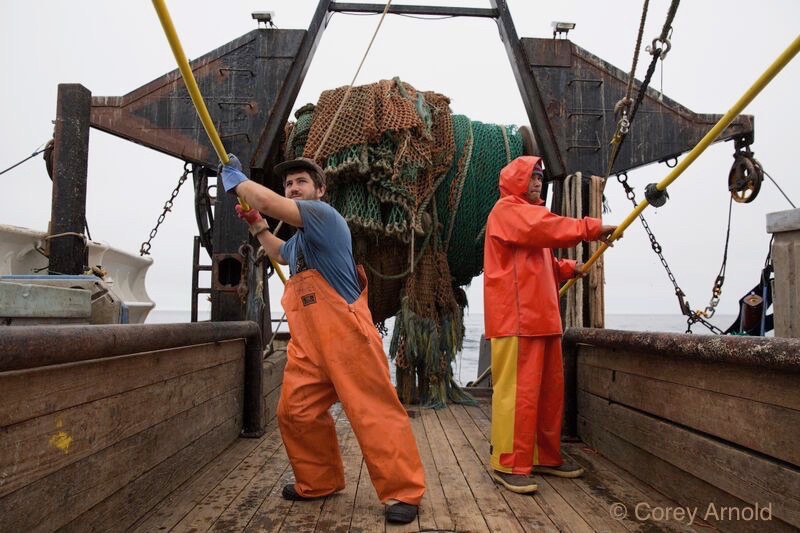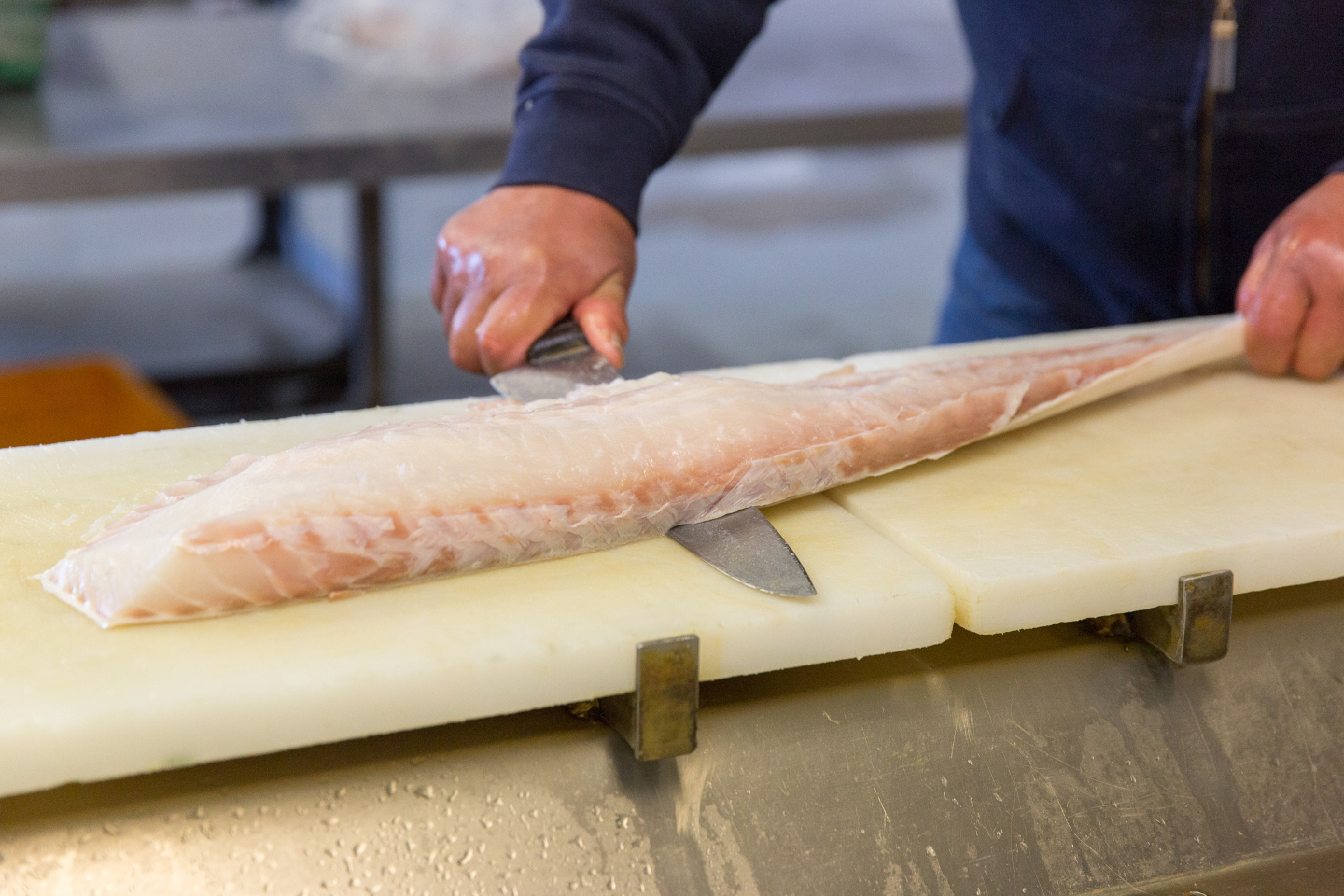The Monterey Bay Fisheries Trust protects local access to the West Coast groundfish fishery.
We do this by holding fishing rights (individual fishing quota and permits) for the local fishing community. We lease our quota annually to fishermen, offering prioritized leasing and affordable lease rates to fishermen who land locally and participate in research and conservation. If you are a fisherman interested in leasing quota or one of the Trust's permits, please review the resources on this page or contact the Trust directly at (831) 233-3101.
Other Links and Information
IFQ System Resource Guide – Two-page flyer with general information and resources about the West Coast Groundfish IFQ program.
Pacific Coast Groundfish Fishery Management Plan and amendments
2024 Leasing Information
2024 Lease Policy – Document outlining MBFT lease priorities.
MBFT & City of Monterey 2024 Available QP
Online Application – To be filled out by fishermen interested in leasing quota from the Trust.
FAQs for Fixed Gear Fisherman – Frequently asked questions for non-trawl fishermen interested in leasing IFQ.
Quota Leasing: The story behind our program
The groundfish trawl fishery
The West Coast groundfish trawl fishery, which includes more than 90 species, such as sablefish, Petrale sole, lingcod, and rockfish, is an important, high volume fishery. It provides steady, reliable landings to ports throughout the year, helping to maintain infrastructure like ice machines, processors, and hoists, needed by all fisheries.
For years, the West Coast groundfish trawl fishery management was not working, with too many vessels competing to catch a limited amount of fish. In 2000, after years of dwindling fish stocks and struggling businesses, the federal government declared the fishery a commercial fishery failure. Since then, the West Coast groundfish trawl fishery has undergone significant changes, and after many hard years, fish stocks have made an incredible comeback.
A shift in management
To relieve pressure on depleted stocks and to protect sensitive seafloor habitats, regulators have worked with fishermen on a number of programs, including voluntary vessel and permit buyouts and area closures such as Essential Fish Habitat and Rockfish Conservation Areas.
In 2011, the federal government launched a new management program called "catch shares" for the West Coast groundfish trawl fishery. The program allocates individual quota shares (a percentage of the annual total allowable catch) to participants based on their fishing history. Each year, fishermen are allowed to catch their quota in the time and manner of their choosing, or they may lease the quota to another participant. If a fisherman meets or exceeds his or her quota, they must buy or lease additional quota from someone else or must stop fishing. To ensure that every pound of fish is accounted for, fishermen must have federal observers aboard every trip, which costs them more than $500 per day. As of 2021, fishermen can use electronic monitoring instead of human observers, but this process is slow going. Today, the West Coast groundfish fishery is arguably the most highly regulated in the world.
An environmental success story
Shifts in management, combined with fishermen-driven innovations and commitment to sustainable fishing, have resulted in decreased bycatch and discards and the recovery of important fish stocks. In 2014, just fourteen years after being declared a federal disaster, the Marine Stewardship Council certified the West Coast groundfish fishery as sustainable and well managed, and the Monterey Bay Aquarium’s Seafood Watch program upgraded 21 species in the fishery from its “Avoid” list to a “Best Choice” or “Good Alternative” ranking.
The quota challenge
Without access to affordable quotas, on top of other regulatory expenses, it makes it very difficult for smaller operators to succeed. Some fishermen are choosing to lease out the quota that they do hold instead of fishing it, and others are choosing to leave the fishery altogether, selling their rights to larger corporate entities from out of state. Quota can be extremely expensive and hard to come by, making it nearly impossible for new fishermen to enter the fishery. Once Monterey Bay loses access to these fishing rights, it will be very difficult, or impossible, to get them back. This would mean a loss of access and opportunity for current and future fishermen, with damaging economic repercussions for fishermen, port infrastructure, processors, fish markets, restaurants, consumers, and other businesses that depend on consistent local landings and local, sustainable seafood.
A solution: Community Quota Funds
To mitigate the potential loss of traditional fishing rights, and to help relieve some of the burden associated with catch share programs, communities across the nation have launched “fishing community quota funds” (also referred to as “permit banks,” “quota banks,” or “community fishery trusts”). A community quota fund (CQF) is a legal entity that can acquire, hold and manage fishery permits and quota, for public benefit, in a community or region. There are several such organizations nationwide, such as the Cape Cod Fisheries Trust in Massachusetts, and the Penobscot East Resource Center in Maine, as well as several in California, including the Morro Bay Community Quota Fund, the Half Moon Bay Commercial Fisheries Trust, and the Fort Bragg Groundfish Conservation Trust.
F/V Pioneer
The Monterey Bay Fisheries Trust
In 2013, the City of Monterey prepared a Fishing Community Sustainability Plan to determine the economic, social, and environmental implications of fishing in Monterey. The final report lists recommendations for improving the performance and sustainability of the entire industry in Monterey, with a recommendation to develop a community quota fund for the groundfish fishery. The Monterey Bay Fisheries Trust is a direct result of that recommendation.
In July 2013, a group of community members began meeting to discuss developing a CQF, and in September 2014, they launched the Monterey Bay Fisheries Trust, a 501(c)(3) nonprofit organization. In September 2015, The Nature Conservancy, which previously owned a large amount of fishing rights, divested more than $1 million in fishing rights to the Trust, allowing us to get into business. The Trust purchased additional quota shares from local fishermen, offering them the first right of refusal to lease and the option to buy them back. The Monterey Bay Fisheries Trust began leasing operations in the fall of 2015.
We are proud to have secured a portion of historical groundfish rights in Monterey Bay and to know that our community will never lose complete access to important groundfish fishing rights. However, there is much work to be done to rebuild the local fishery and support a diverse fleet of fishing vessels targeting different species and different markets. We need to improve port infrastructure (e.g., ice machines), rebuild markets for locally landed and sustainable seafood, improve management programs to reduce the financial burden on fishermen, increase business support services for fishermen, and build community awareness of the importance of commercial fisheries to our economy, our culture, and our identity.






